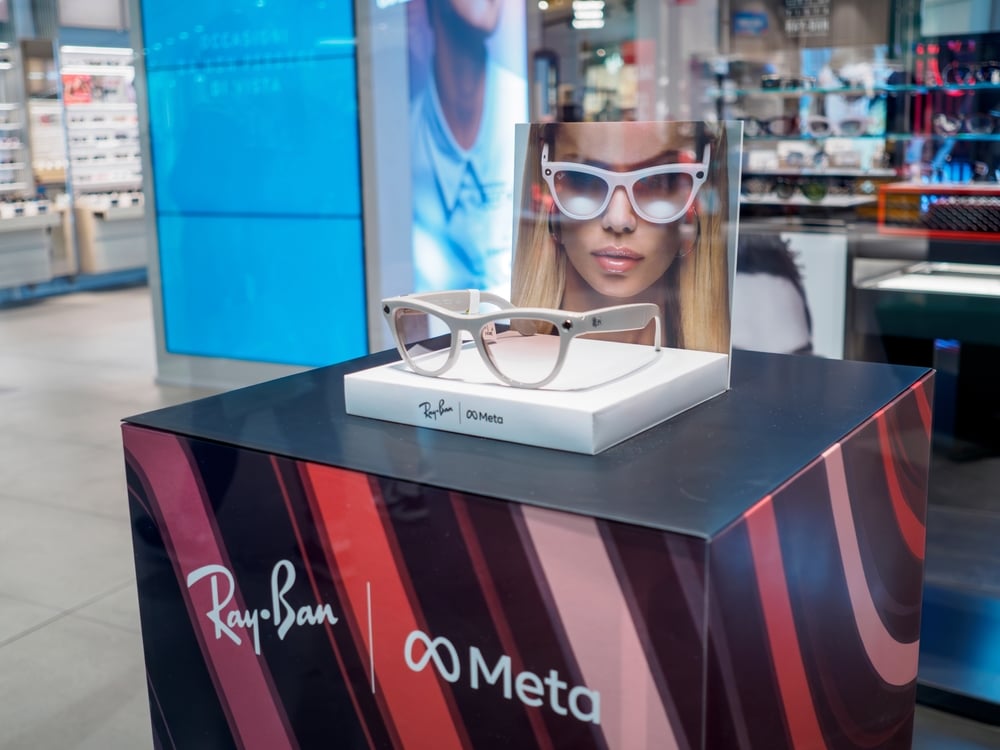Meta is taking another leap into wearable technology, planning to integrate displays into its Ray-Ban smart glasses by late 2025. This move is part of the company’s ambitious strategy to develop lightweight augmented reality (AR) headsets that could replace smartphones as the primary computing device for consumers. Partnering with eyewear giant EssilorLuxottica, Meta aims to revolutionize the market with these advanced $300 smart glasses.
A Vision for Smarter Glasses
The upcoming Ray-Bans will feature a built-in screen capable of displaying notifications and responses from Meta’s virtual assistant. These upgrades mark a significant evolution from the existing model, which includes speakers, cameras, and microphones. By adding displays, Meta positions itself to compete with Apple’s Vision Pro and other wearable tech, moving closer to its goal of creating fully functional AR glasses.
Michael Miller, AR hardware lead at Niantic, remarked, “Meta proved that lightweight glasses, even without a display, could be interesting and useful. Adding displays takes this utility to a whole new level.”
The Role of Orion: Meta’s AR Prototype
Meta has also accelerated the development of its Orion augmented reality glasses, which were unveiled as prototypes in September 2024. Orion’s compact design, lightweight frame, and innovative 3D displays represent breakthroughs in AR technology. Unlike earlier failed projects such as Google Glass and Microsoft’s Hololens, Orion offers a more practical and appealing user experience.
Controlled through neural interfaces or wristbands, Orion exemplifies Meta’s cutting-edge approach to AR. The use of silicon carbide lenses allows for brighter and larger images, though the material’s high cost remains a barrier to mass production.
“If the goal now is to expedite Orion commercialization, one path would be to reduce the field of view and use more ubiquitous glass materials,” Miller suggested.
Challenges Ahead for Meta
Despite its innovation, Meta faces significant hurdles in bringing its AR glasses to market. Balancing hardware performance, battery life, and aesthetics while maintaining affordability is a complex challenge. Supply chain issues and the high manufacturing cost of advanced materials like silicon carbide lenses add to these difficulties.
Experts also point out societal acceptance as a lingering challenge. While early adopters have embraced products like the Ray-Ban Meta glasses, widespread acceptance of smart eyewear remains elusive, echoing the struggles faced by Google Glass nearly a decade ago.
Meta’s Strategy: From Metaverse to AI
Meta’s focus on AR glasses comes as the company shifts away from its vision of a 3D metaverse and toward AI integration. CEO Mark Zuckerberg has poured billions into AI, including developing open-source language models. This convergence of AI and AR technologies underpins Meta’s strategy to dominate the next-generation operating system.
Luke Alvarez, founding partner at Hiro Capital, observed, “What’s starting to become interesting about the Ray-Bans and Orion is the way Meta’s AI strategy is converging with mixed reality. [Zuckerberg] could end up owning a big piece of the next-gen operating system, which is clearly his stated goal.”
Consumer Success and Market Growth
The newest generation of Ray-Ban Meta glasses, launched in October 2023, has already outperformed its predecessors in sales. According to EssilorLuxottica CEO Francesco Milleri, these glasses sold more in a few months than earlier models did in two years. The wearable glasses market grew by 73% in 2024, signaling increasing consumer interest in AR devices.
These sales figures show that Meta’s push into wearable tech is resonating with consumers. As the company refines its products and integrates AI, it stands poised to lead the AR market into a new era of innovation and utility.
Looking Ahead
Meta’s ambitious plans for the Ray-Ban smart glasses and Orion prototypes underscore its commitment to reshaping the wearable tech landscape. By integrating displays and advancing AR capabilities, the company is positioning itself as a leader in the next wave of computing technology.
However, success will depend on overcoming technical challenges, ensuring affordability, and achieving broader societal acceptance. As 2025 approaches, Meta’s efforts could redefine how we interact with technology and blur the lines between the physical and digital worlds.























